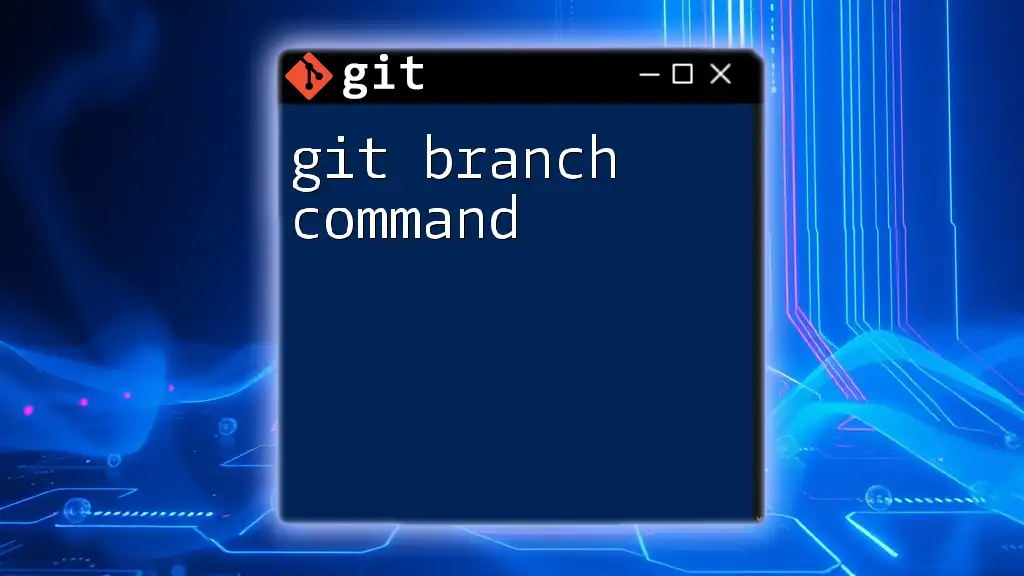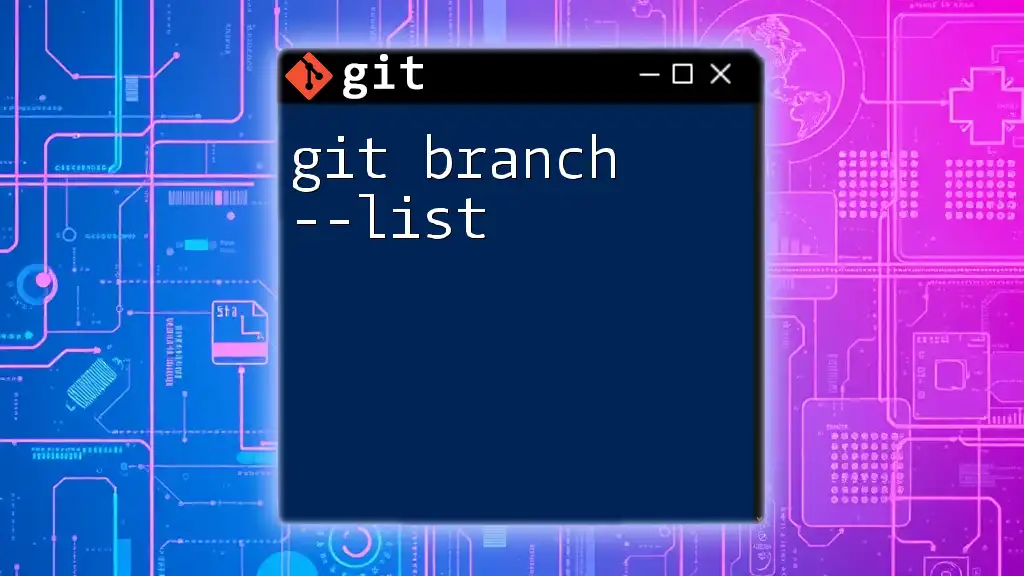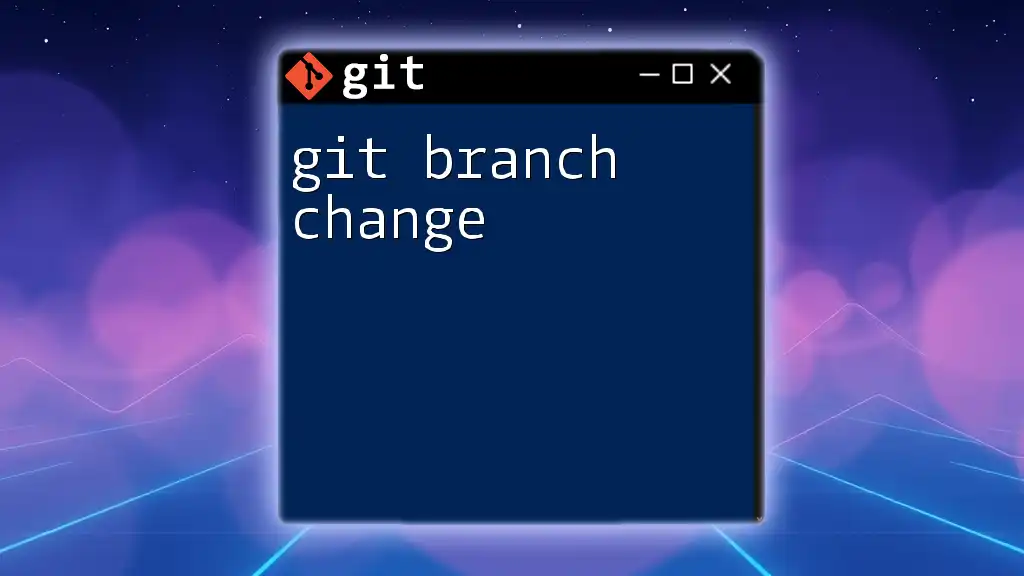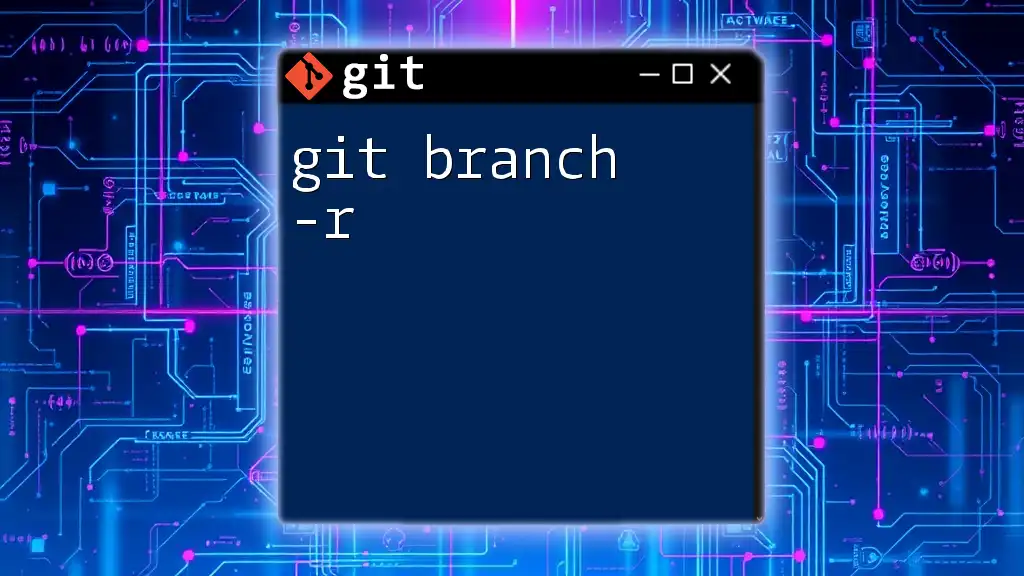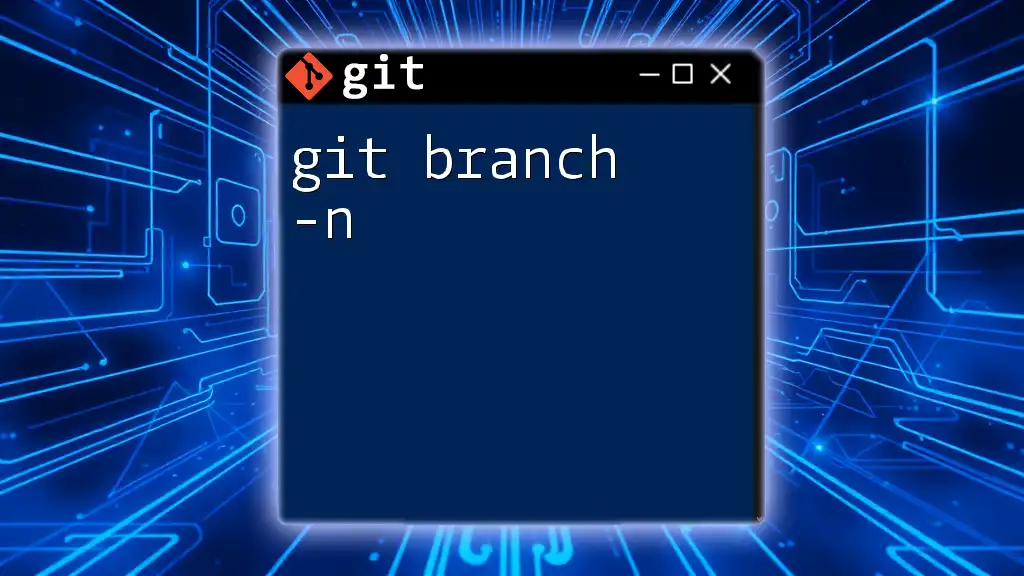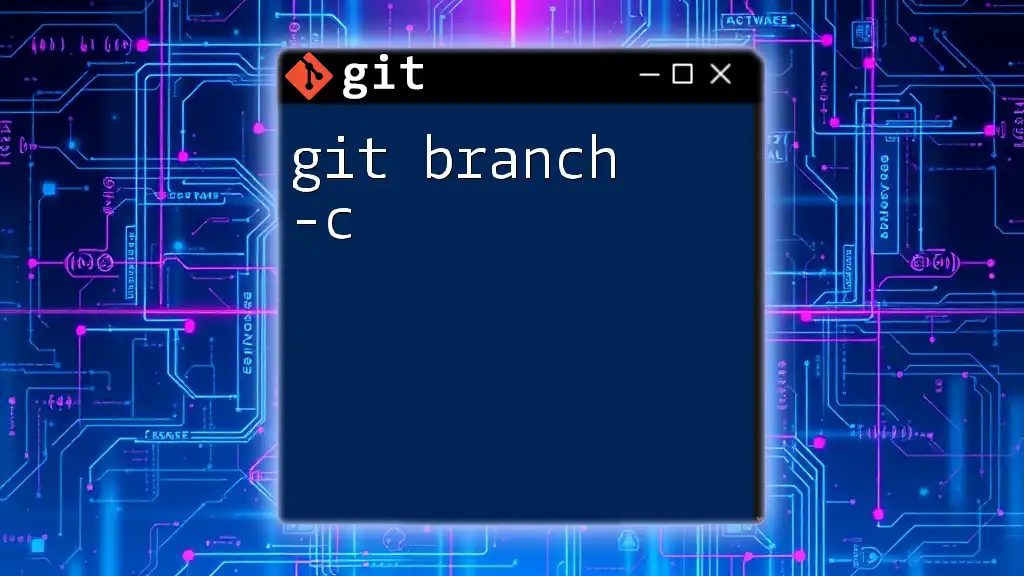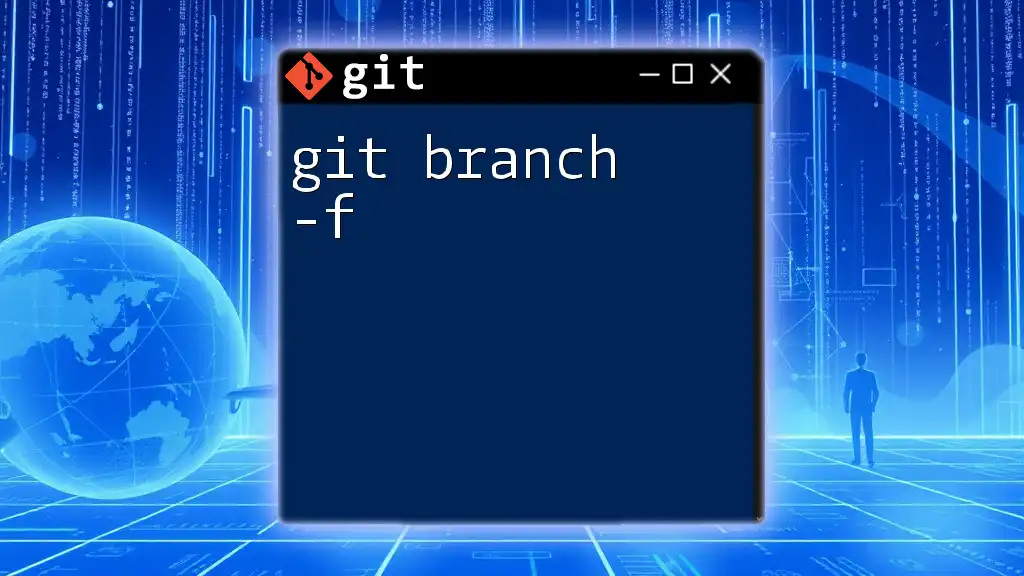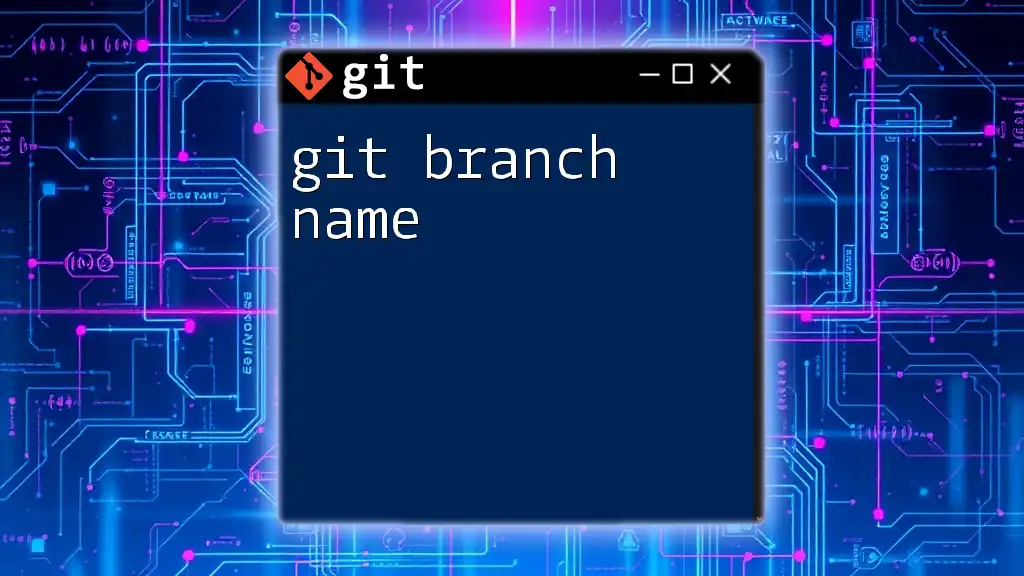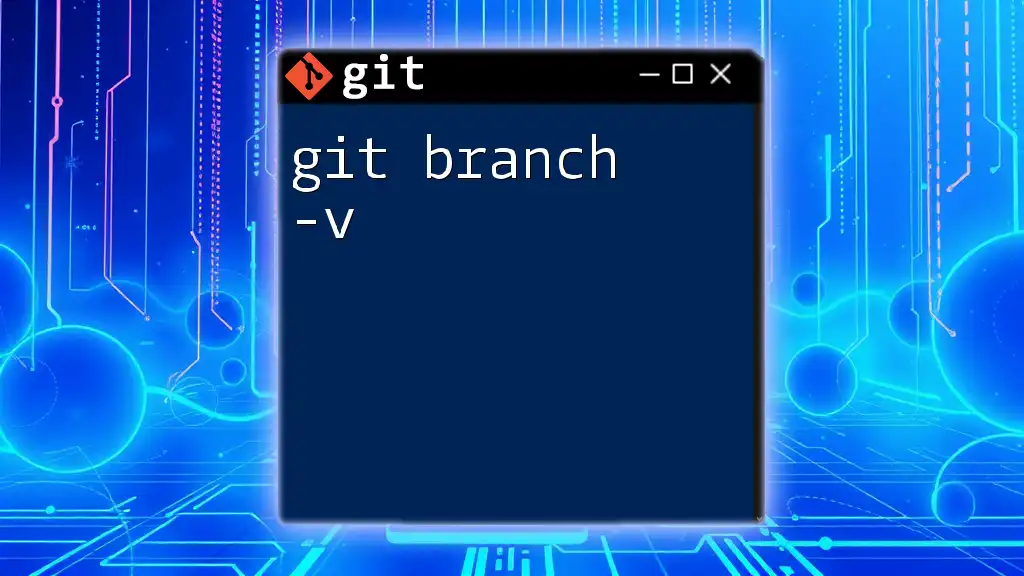"Git branchless" refers to a workflow that allows developers to manage their code changes and collaborate effectively without the traditional use of branches, enabling a more streamlined process.
git add .
git commit -m "Your commit message"
git push
What is Git Branchless?
Git branchless is a development approach that eliminates the use of traditional branches in Git, instead favoring a flat commit history. By utilizing a branchless workflow, developers can streamline their processes, reduce merge conflicts, and enhance collaboration. The fundamental ethos behind being branchless is to encourage continuous integration and deployment.
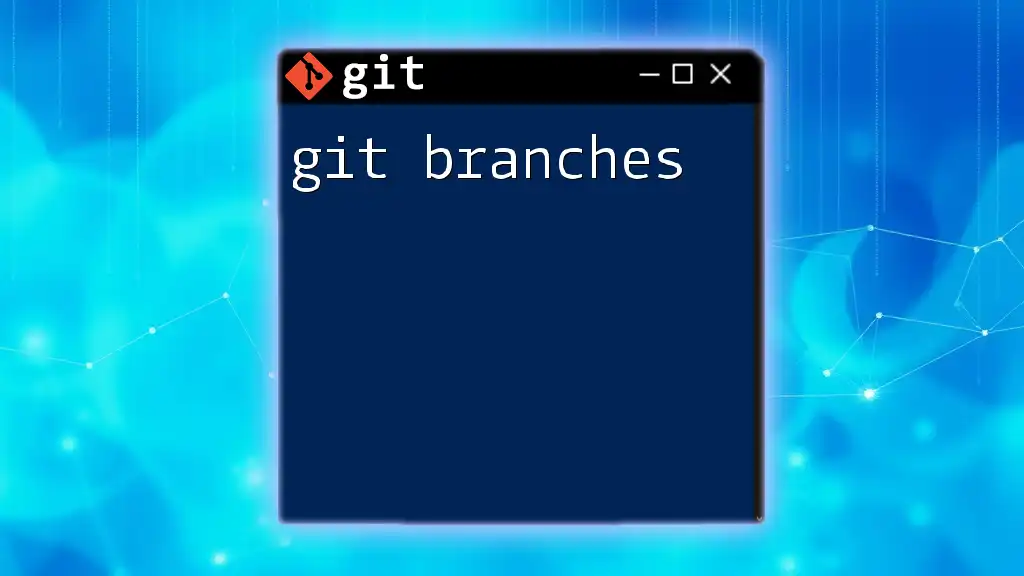
Why Choose a Branchless Approach?
Choosing a branchless workflow offers several benefits that can significantly boost development efficiency:
- Increased Developer Productivity: Without the need to manage multiple branches, developers can focus more on writing code rather than resolving conflicts or switching contexts.
- Reduced Merge Conflicts: As developers collaborate more fluidly on a single stream of work, the chances of conflicts arising from simultaneous edits are minimized.
- Culture of Continuous Integration: Frequent and smaller commits allow for quicker feedback and smoother integration of changes, leading to a more agile development environment.
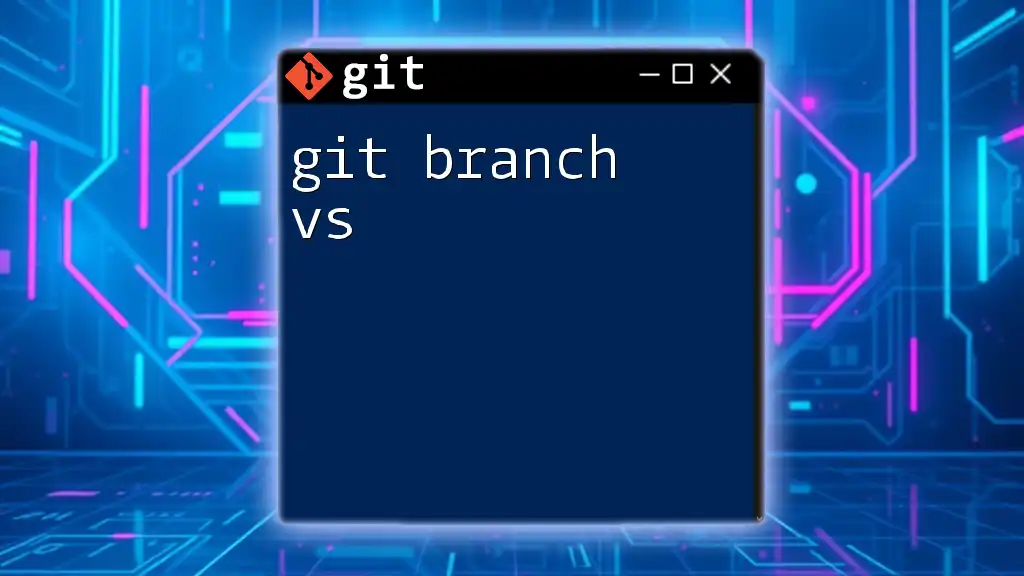
Understanding the Basics of Git
What is Git?
Git is a distributed version control system that tracks changes in source code during software development. Its primary objective is to facilitate collaboration among multiple developers, allowing them to concurrently edit code while maintaining a history of changes. Git's flexibility, speed, and branching capabilities make it a preferred tool in the software development industry.
Traditional Git Workflow
How Git Branches Work
In the traditional Git workflow, developers create separate branches to work on features or fix bugs. This allows teams to isolate changes until they are ready to be merged back into the main codebase. However, managing these branches can become cumbersome, especially as projects scale.
Limitations of Branching
While branching provides a structure for many development processes, it also brings certain limitations. Teams often experience delays due to the time-consuming process of merging branches, and dealing with complex merge conflicts can derail productivity. The reliance on multiple branches increases cognitive load for developers, as they must keep track of various branches and their respective statuses.
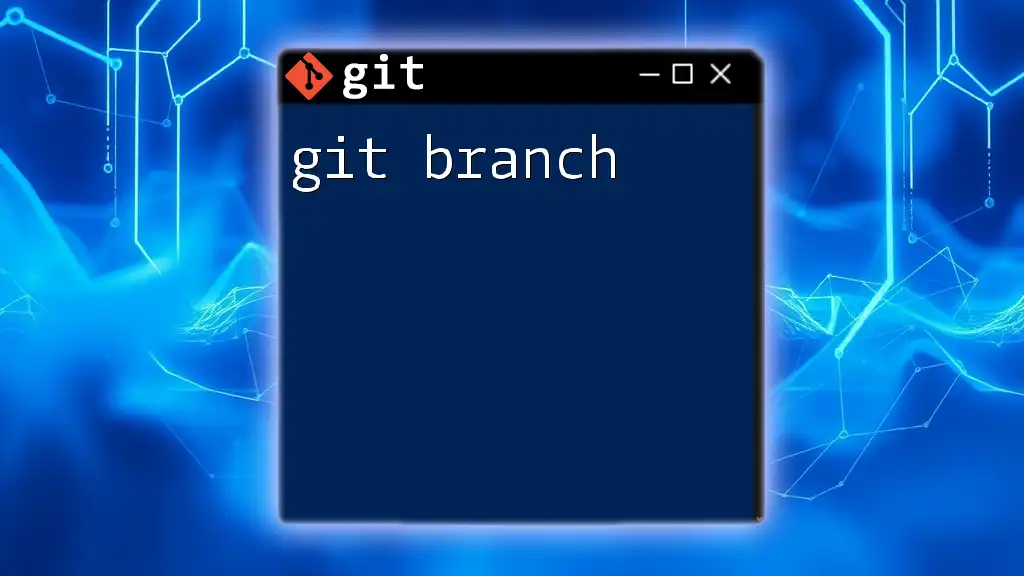
The Concept of Being Branchless
Principles of Branchless Git Development
Flat Structure
A key principle of branchless development is utilizing a flat commit history instead of multiple branches. This approach fosters a cleaner view of the project's progress, making it easier to track changes over time. Each commit acts as a stepping stone in the development process without creating the operational overhead associated with branch management.
Tagging vs. Branching
Instead of creating branches, a branchless workflow utilizes tagging to mark significant points in development. Tags serve as timestamps or snapshots of the work, allowing developers to easily reference specific changes or versions without cluttering the commit history with branches.
Tools and Techniques for Branchless Workflow
Using Git Worktree
One of the key tools in a branchless Git workflow is `git worktree`, which allows developers to create multiple working directories tied to a single repository. This enables them to work on different tasks concurrently without the need for separate branches. An example command to set this up is:
git worktree add ../project-dir
This command creates an additional working directory, ensuring that changes can be made independently while still collaborating with the core repository.
Rebasing Instead of Merging
Rebasing is a critical technique in a branchless workspace, allowing developers to integrate changes from the main branch into their current working commit without creating a separate merge commit. For instance, instead of merging, you can rebase your work with the following command:
git rebase main
This maintains a clean history, as it applies your changes on top of the latest base, effectively making your commits part of the linear progression of development.
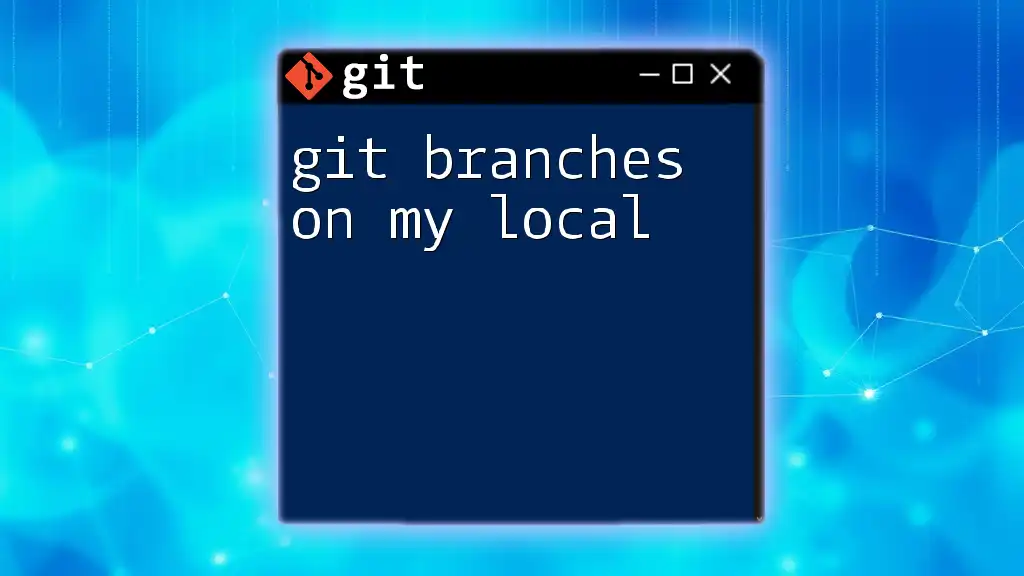
Practical Guide to Implementing Git Branchless
Setting Up a Branchless Workflow
Transitioning from traditional branching to a branchless environment requires foundational changes in how your team operates. Start by encouraging a culture that values small, frequent commits with clear messages. Utilize `git worktree` for different tasks, and ensure the team understands the rebasing process to manage integration seamlessly.
Establish guidelines that emphasize creating commits that reflect small, incremental changes rather than large features reserved for branching.
Daily Operations in a Branchless Environment
Committing Changes
In a branchless workflow, every commit becomes significant. Developers should focus on writing meaningful commit messages that not only describe what has been changed but also provide context about why the change was necessary. A well-crafted commit message can look like this:
feat: Add user authentication
This concise message informs collaborators about the nature of the change, making it much easier to understand the project's history.
Collaborating with Team Members
Effective collaboration in a branchless environment hinges on communication and understanding. Developers can leverage the `git cherry-pick` command to incorporate changes from other team members without merging entire branches. This can enable selectively pulling in specific changes that are necessary for the current workflow.
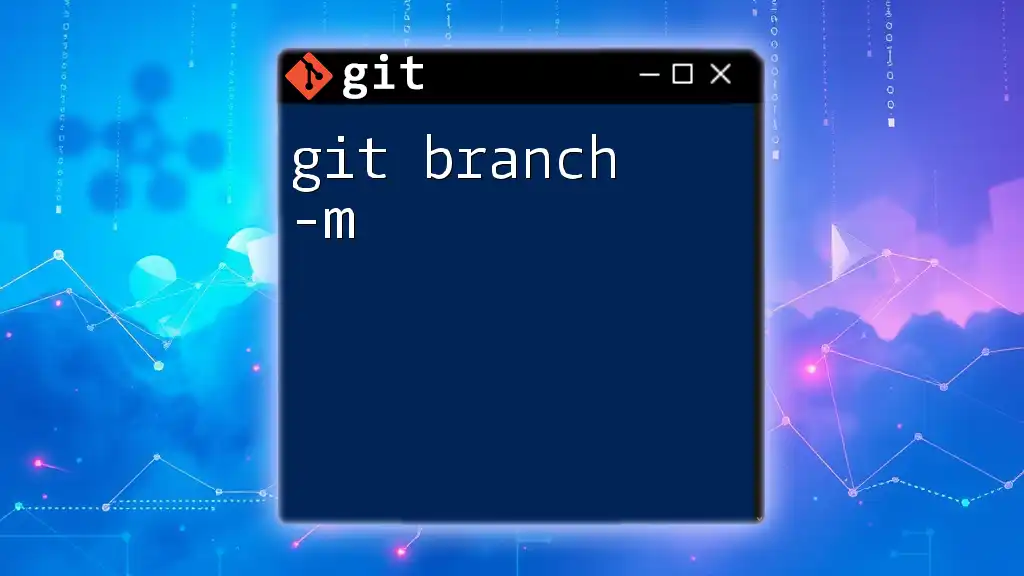
Real-World Examples of Branchless Git
Case Study: Company X's Shift to Branchless
Consider the story of Company X, which faced increasing complexity in its development workflow due to the heavy use of branches. After transitioning to a branchless Git workflow, Company X experienced a notable improvement in development speed. Team members reported a 25% reduction in merging time and a substantial decrease in conflicts. The simplicity of maintaining a flat history allowed them to iterate more quickly on features and fixes.
Testimonials from Developers
Developers who embrace the branchless approach often highlight the clarity and simplicity it brings to their day-to-day work. For example, one developer noted, “Working without branches has significantly simplified my workflow. I can see my changes in real-time and integrate seamlessly with my team.”
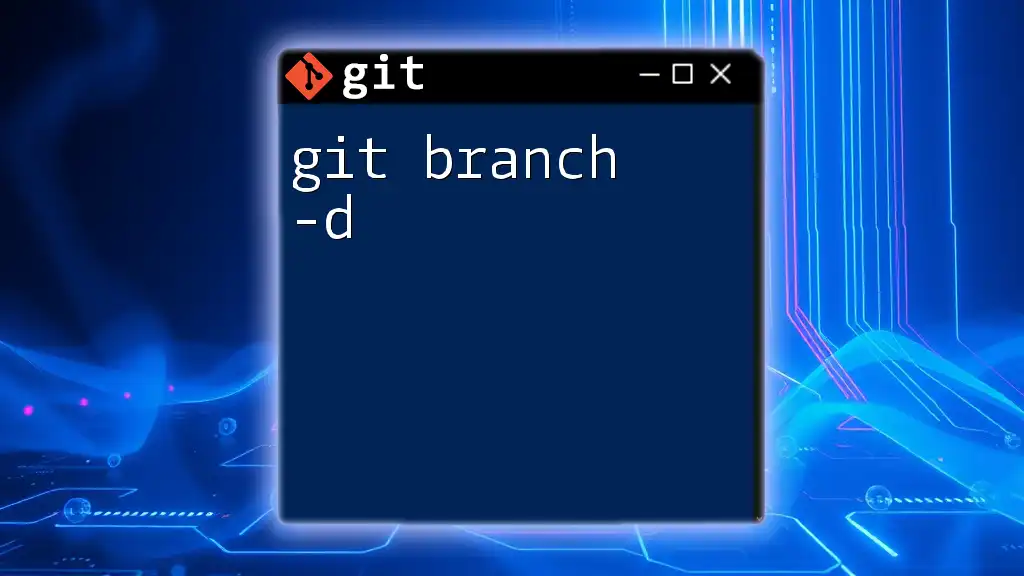
Potential Drawbacks and How to Mitigate Them
Understanding the Downsides
Despite its advantages, the branchless workflow has some potential drawbacks. There can be a learning curve for those who are accustomed to the traditional branch-heavy workflows. Developers may initially find it challenging to adapt to the new practices required for effective branchless development.
Best Practices to Address Drawbacks
To mitigate these challenges, it is essential to provide thorough training and resources for all team members. Implementing pair programming or mentorship initiatives can also help ease the transition. Encourage an open dialogue among team members to clarify best practices and share experiences in adapting to the branchless model.
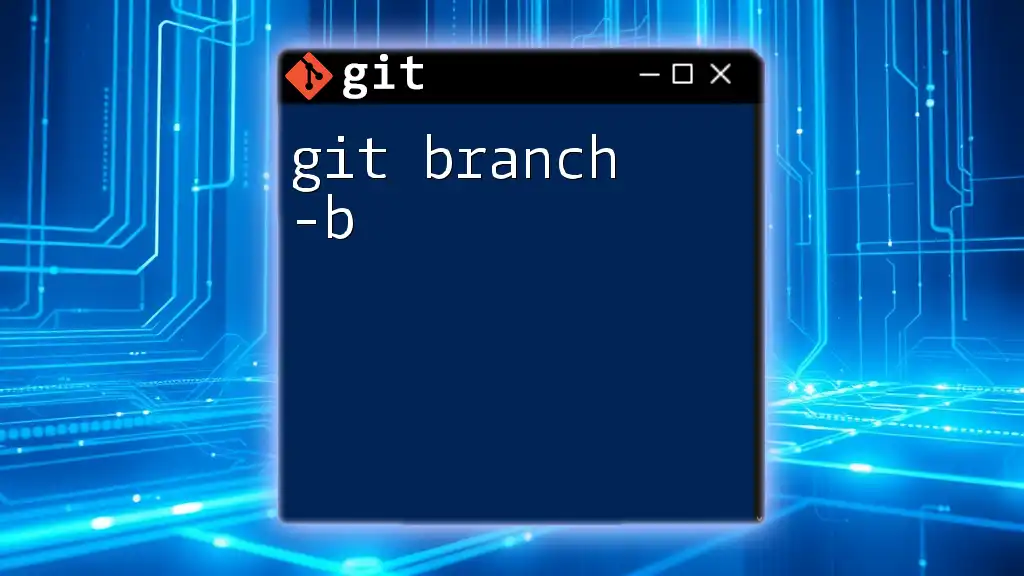
Conclusion
In summary, adopting a git branchless workflow can greatly improve development efficiency and collaboration within teams. This approach encourages continuous integration, reduces the likelihood of merge conflicts, and fosters a culture of Agile development. By embracing the principles of branchless Git, teams can focus more on building quality software without the burden of managing multiple branches.

Additional Resources
For those who want to dive deeper into the concept of git branchless, consider exploring books and online courses focused on advanced Git practices. Engage with communities and forums where fellow developers share experiences and insights on implementing branchless workflows. Utilizing these resources will enhance your understanding and help you successfully adopt a branchless approach within your teams.







